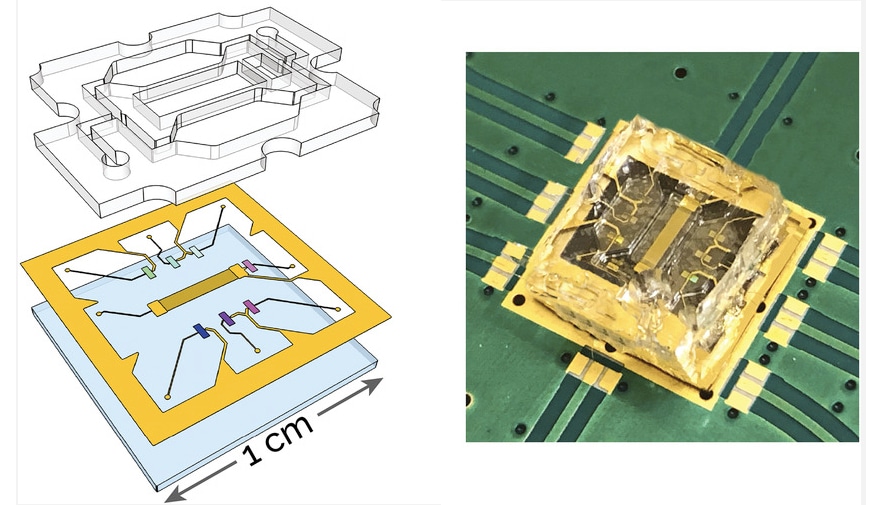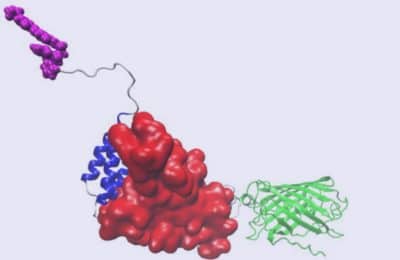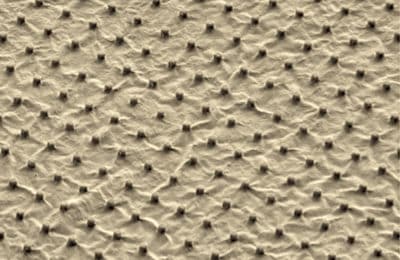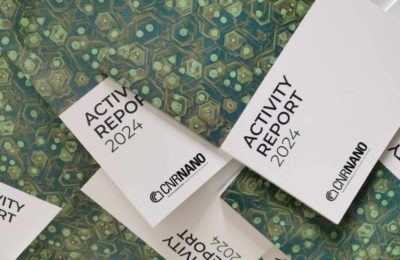Measles is one of the most infectious airborne viruses worldwide. An inexpensive and effective vaccine is available, but Measles is common in developing countries and sporadic outbreaks also occur in developed countries, primarily due to non-vaccinated people. New research published in Advanced Functional Materials describes a novel point-of-care biosensing device capable of detecting measles virions in human saliva, which may help with efforts to control viral spread.
This is the result of a collaboration led by Marco Cecchini from the Nanosciences Institute of the National Research Council of Pisa (Cnr-Nano) with ARCHA srl, the Department of Translational Research and New Technologies in Medicine and Surgery of the University of Pisa, the Scuola Normale Superiore and INTA srl. The device, which uses an innovative technology based on surface acoustic waves, is suitable for use in early diagnostic tests and in emergency situations, for measles and other types of viruses.
Experiments validated the accuracy of the lab-on-a-chip device, which is smaller than a 1-cent Euro coin (or a U.S. quarter). The device may offer a convenient platform for measles diagnosis and serve as a guideline for designing new microfluidic biosensing systems. “Our technology for the first time demonstrated the synergic operation of different surface-acoustic-wave-based micro devices on the same chip, in the context of lab-on-a-chip biosensing. In this way we have been able to drastically improve the detection limit of our sensors, potentially enabling early point-of-care diagnostic applications,” said senior author Marco Cecchini, of the Nanoscience Institute of the Italian National Research Council, and CTO and co-founder of Intelligent Acoustics Systems in Pisa.
“Surface acoustic waves are a kind of micro-earthquake that propagates along the sensor surface,” explains Cecchini. “When the virus attaches to the sensor, it slows the wave propagation speed making it possible to register the presence of the molecule. We used these mechanical waves both to mix the fluid sample and to detect the virus, and this has dramatically improved sensitivity. of our sensors compared to other acoustic sensors already on the market “. The device has been tested for measles virus, “but the technology can be adapted to other types of viruses, such as Sars-Cov-2, and to bacteria, proteins and nucleic acids,” says the researcher Cnr-Nano.
The device can be developed to perform early point-of-care diagnoses, i.e. in the vicinity of the patient. “While conventional tests require sample processing, dedicated laboratories and specialised personnel, this sensor does not require particular processing and can be used in situations where conventional tests are not practicable such as airports, stations, emergency situations”, explains Mauro Pistello, Director of the Virology Operating Unit of the Pisan University Hospital. “A timely diagnosis is in fact crucial to prevent early spread of highly airborne diseases such as measles, flu and COVID-19”.
Marco Cecchini, who leads the Neurosens research group at the NEST laboratories of Cnr-Nano and Scuola Normale Superiore, has twenty years of experience in the field of microfluidics and the use of surface acoustic waves. “Our study demonstrates the validity of such a technology, already covered by a patent owned by INTA, a Cnr and Scuola Normale Superiore spin-off. The technology will now be validated with a clinical trial”, concludes the researcher.
The study was conducted as part of the SENSOR project, co-funded by the Tuscany Region, call POR FESR 2014-2020 – action 1.1.5.a3 – FAR FAS 2014.
Reference article: Surface-Acoustic-Wave (SAW) Induced Mixing Enhances the Detection of Viruses: Application to Measles Sensing in Whole Human Saliva with a SAW Lab-On-a-Chip, Advanced Functional Materials (2022). DOI: 10.1002/adfm.202201958



